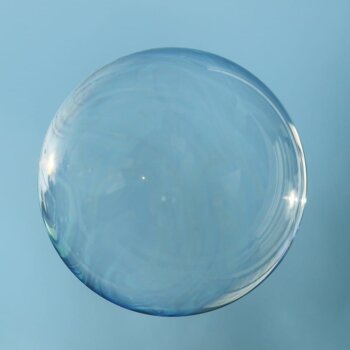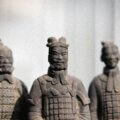Key Takeaways:
Non-fungible tokens (NFTs) are digital objects that represent something else, such as a work of art, a video or even a tweet. They certify the existence and the ownership of this item through a data recording on a blockchain (a distributed ledger technology) NFTs are most often bought and resold via auction sites, where payments are made in cryptocurrency (such as ether currency) It is this notion of a certificate registered on a. blockchain that distinguishes an NFT from a standard digital work.
Non-fungible tokens (NFTs) are digital objects that represent something else, such as a work of art, a video or even a tweet. They certify the existence and the ownership of this item through a data recording on a blockchain (a distributed ledger technology).
Since the emergence of NFTs in 2016, many artists have experimented with this new digital device to market their creations. NFTs are most often bought and resold via auction sites, where payments are made in cryptocurrency (such as ether currency). It is this notion of a certificate registered on a blockchain that distinguishes an NFT from a standard digital work.
The public and media discourse about NFTs is polarized: in the eyes of their strongest enthusiasts, NFTs represent the future of art, while their detractors consider them a vast ripoff and waste of energy.
How can this NFT phenomenon be characterized? To what extent does it challenge the established codes of contemporary art?
As a researcher specialized in media studies and sociology of culture, I am providing a brief overview of the situation.
Crypto-evangelists and crypto-skeptics
On one hand, there is the camp that can be described as crypto-evangelists: they adhere to a discourse that present NFTs as a radical revolution that will change everything.
This is precisely the discourse surrounding the sensational 2021 sale of a work by the artist Beeple (a collage of vignettes created by digital software) at the prestigious auction house Christie’s for nearly US$70 million. According to the two main buyers, the purchase was “emblematic of a revolution in progress,” and marked “the beginning of a movement carried out by a whole generation.”
On the other side, there are the crypto-skeptics. This is the position of Hito Steyerl, a widely recognized media artist. She believes that NFTs are the “equivalent of toxic masculinity,” and owe their development to “the worst and most monopolistic actors” who are “extracting labour from precarious workers” and “take up way too much attention and use up all the oxygen in the room.”
This polarization means that the real potential of NFTs, as well as their flaws, which are also very real, tend to be overshadowed by caricatured positions of principle. However, within this ecosystem of NFTs, there exists a set of rich and plural artistic practices.
Emerging creative scenes
The NFT format definitely represents a new type of object being traded. It is based on a new type of contract (known as “smart”), which is itself the result of the innovation of blockchain technology. In this way, the NFT format has given rise to the emergence of a new creative scene. Or, rather, scenes, in the plural, which are characterized by a great effervescence — but also by certain contradictions.
The “native” scenes of the NFT format, that is to say, those born with the invention of this format, are characterized by a strong media visibility, a volume of far-reaching financial investment, and, for some of its actors, a will to reshuffle the cards of the art world by criticizing its established order.
A large portion of NFT creators come from a practice of 3D modelling, graphic design, animation or video game design — in other words, from the creative industries sector. In recent decades, this sector has generated a very large pool of skills, whose creative surplus finds a mode of expression in the NFT format, but also a source of additional income to cope with the often precarious conditions of creative work.
Many figures of the native NFT scenes are, to use the expression of the sociologist Howard S. Becker, outsiders (neophytes) in comparison to the established art world. That is, they socialize in circles other than those of the institutional art world, and they transgress its rules in many respects.
A more egalitarian art world?
The discourse of the main purchasers of Beeple’s sensational work is very enlightening in this sense. MetaKovan and Twobadour (two investors of the crypto world, both of Indian origin) reveal in an interview:
We have been conditioned, from a very young age, to think that art was not for us. …We have always been against the idea of exclusivity. The metaverse is all inclusive. … A metaverse in which everyone will have the same rights, powers, will be legitimate. … It is particularly egalitarian.
However, there are major contradictions between the discourse of egalitarianism they are advocating here, and its implementation in the projects of these two investors. For example, during the technological art event Dreamverse that they organized in New York in 2021, the price of admission to the evening varied between US$175 and $2,500 — an unaffordable cost for many amateurs. This hierarchy of prices leads, rather, to the reproduction of a logic of exclusivity that favours the most fortunate.
Museums are cautious
The gap between the market value of NFTs and their value in museums is unprecedented. The former is reaching unprecedented heights, while the latter is still at rock bottom. Indeed, the collection of NFT by museums remains, to this day, a very marginal practice. Only a handful of NFTs are integrated into museum collections. Some of them are acquired following an exhibition in a museum, where they are presented on digital screens hung on the wall.
Cultural legitimacy is affected by the disintermediation (elimination of intermediaries) and reintermediation (introduction of new intermediaries) that characterize the world of NFTs. In its disruptive impulse, the proclaimed revolution of NFTs cuts itself off from a chain of well-established, legitimate intermediaries — the gallery owners, curators, art critics, conventional collectors and public subsidies.
It has replaced them with new intermediaries, primarily “whales” — investors who have made a fortune in cryptocurrency — or popular culture celebrities. These new intermediaries overinvest in financial capital in the production of NFTs with the aim of gaining a position of prestige as a collector, or to enrich themselves by increasing the value of works. But they often lack the social and cultural capital to find a way to access museums and their exhibition spaces and their collections.
In search of legitimacy
However, these works are publicly accessible, as all NFTs are freely searchable on their buyers’ e-wallets. Some collectors buy works only to speculate. Others gain visibility by displaying their NFTs in a metaverse (a virtual world) such as Decentraland or Space.
And for others, still, the quest for legitimacy goes further: in the spring of 2022, a group of artists, curators, collectors and NFT platforms organized a Decentral Art Pavilion, in parallel to the Venice Biennale. Remaining outside the official program, the exhibition aimed to position NFTs in the orbit of this key contemporary art event.
But the presence of NFTs remained marginal in this edition of the biennial. Only the Cameroon pavilion exhibited NFTs under the leadership of a curator with a shady reputation, and the result was disappointing.
The recognition of the NFTs by the consecrated art world will perhaps come about by other avenues, like the more experimental practices presented at the documenta art exhibition in Kassel, Germany this year, or through artistic movements from developing countries, like the Balot project, which used an NFT to criticize the appropriation of a work originating from the Republic of the Congo by an American museum.
So recognition could come through the margins. But in these cases, the marginal players could more easily access the established art world because they share its codes.





























